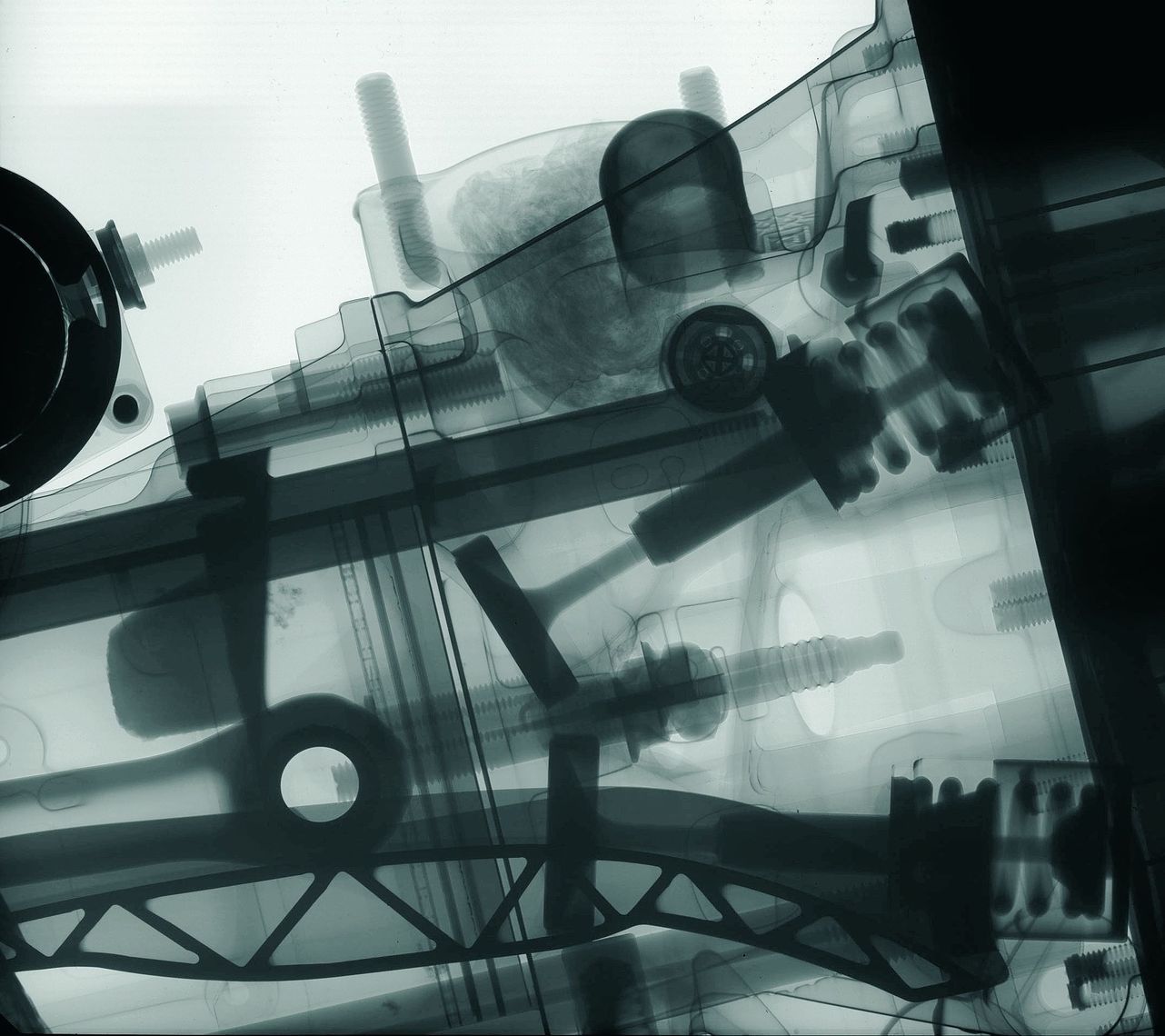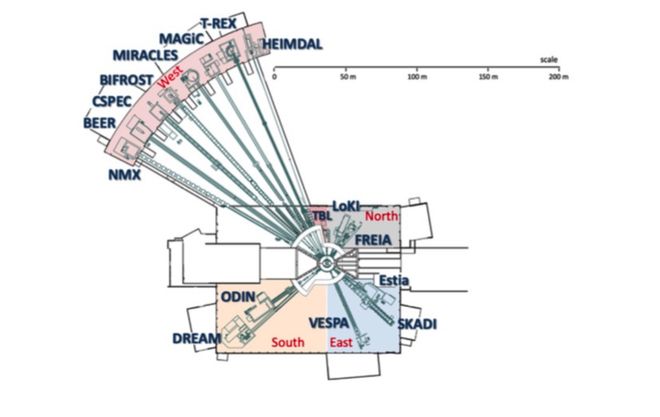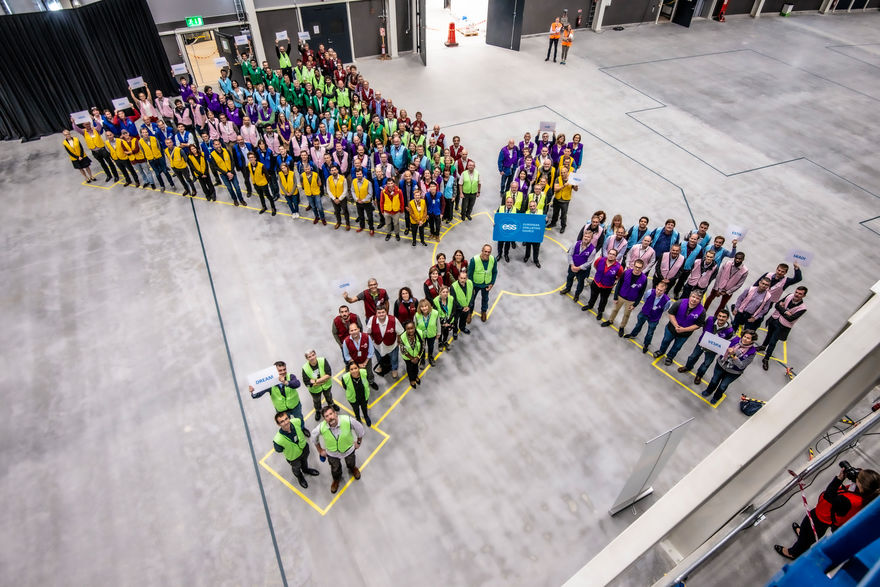
ESS has a special role to play in enabling scientific breakthroughs in research related to what the world needs, such as effective health treatments, more sustainable energy solutions or safer, lighter, and better engineering materials. To do this, we are building the world’s most powerful neutron source, equipped with cutting-edge scientific instruments to help researchers shape the future.
In January 2020, the scientists and engineers who have been developing the state-of-the-art ESS neutron science instruments published a paper in the peer-reviewed journal, ’Nuclear Instruments & Methods in Physics Research’. The paper, entitled 'The instrument suite of the European Spallation Source', provides a concise summary of the 15 instruments that will be found in the initial ESS Instrument Suite, and is significant, not just for ESS, but the entire neutron science community, globally.
As outlined in the paper, the initial instrument suite will cater for scientific communities working across a wide range of research areas: life sciences, soft condensed matter, chemistry of materials, energy research, magnetism and superconductivity, engineering and geo-sciences, and archeology & heritage conservation.
“The instruments on offer at ESS will equip neutron users with the ability to do new things,” explains curator of the paper, and previous ESS Head of Neutron Instruments Division, Ken Andersen, who now works at Oak Ridge National Laboratory in the United States.
Implementing a vision for science
“In the current neutron scattering landscape, educated users are running up against the limits of what is possible today, but the instruments that ESS is building will allow them to push the boundaries of neutron science,” says Ken, adding, “It may even open up new avenues of exploration where there are scientific challenges or interests that can be addressed by neutrons, but which are not currently being addressed in this way.”
ESS's Acting Head of Neutron Instruments Division, and one of the 178 co-authors of the paper, Andrew Jackson, explains that each tailor-made instrument is predicted to provide world-class performance, even before ESS is operating at full power of 5 MW when it will be the most powerful source of neutrons in the world.
A decade of work in 39 concise pages
“The paper took Ken two years to pull together, and is a culmination of almost a decade’s worth of work by scientific collaborators across Europe – capturing and conveying the truly pan-European nature of the ESS project,” Andrew continues.
He also points out that ESS is much bigger than the people working here in Sweden: “While the many co-authors are collaborators from all ESS in-kind partners, institutions and laboratories who are together building ESS, the number of co-authors by no means reflects all of the people who have contributed to the development of the instruments from inception. We have had design committees, formal and informal peer discussions, and engagement from scientists and engineers not officially involved in the project but who have had experience in the field, all sharing their knowledge to enable those who have been involved hands-on in the design and development process
The road to First Science
ESS Director of Science, Andreas Schreyer, explains that the design of the ESS instrument suite reflects a vision to maximise the breadth and depth of the scientific impact of the early years of ESS, and provides a solid base for completion and further expansion of the facility in the future.
“We are all very proud of this paper. It will be the reference for years to come of the instruments a researcher who uses neutrons can expect to find at ESS,” shares Andreas.
During the early science programme at ESS, the following instruments will be at the disposal of researchers who will conduct experiments at the facility. Click on the name to find out more about the instrument and who is designing and building it:
BEER: Engineering Diffractometer
This time-of-flight materials engineering instrument built by the partners Helmholtz-Zentrum Geesthacht (HZG) from Germany and the Nuclear Physics Institute, CAS (NPI) from the Czech Republic offers new opportunities for investigation of deformation mechanisms, microstructure evolution and phase transformations in materials developed for high-tech industrial applications in situ under real processing or operating conditions.
BIFROST: Extreme Environment Spectrometer
BIFROST will explore the intricate physics of magnetism and superconductivity, with applications in the IT and energy materials of tomorrow. It will also be used in geo-science and functional materials. It will do this with neutron spectroscopy, the main tool for investigating low-energy dispersive dynamics in single crystals.
CSPEC: Cold Chopper Spectrometer
CSPEC will used in a wide variety of scientific applications, spanning the life sciences, functional materials and chemistry. Its key capability is to follow kinetic events in situ or in operando, enabled by very high flux.
CSPEC is a direct geometry time of flight spectrometer developed as a German/French collaboration between FRM II and LLB. While both institutions are strong in soft matter and biophysics research, LLB additionally focuses on physical chemistry, magnetism, superconductivity, and structural and phase transition studies. FRM II specialises in materials science, structure research, quantum phenomena, nuclear and particle physics, and neutron methods. The result of this partnership is a 'workhorse' spectrometer that will deliver results for both an academic and industrial user base.
DREAM: Bispectral Powder Diffractometer
Versatile neutron powder diffractometer that will enable new physics and chemistry research, serving areas such as nanoscience, energy and battery materials, and complex magnetic structures.
Estia: Focusing Reflectometer
Ἑστία, Greek goddess of the hearth (lat.: focus) and first born of the Olympians, is the eponym of the vertical sample reflectometer at ESS. The Estia instrument will probe surfaces, thin films and layered systems, revealing structure and magnetic phenomena. Named for its unprecedented focus, Estia will be able to address complex systems available only in small quantities. The science has visionary applications for society, including spintronics and novel IT materials.
FREIA: Liquids Reflectometer
Understanding surface chemistry and the properties of layers and buried interfaces is a key challenge in life science and soft matter research. Examples include biological membranes, drug delivery systems, cosmetics and food. Both the structure and kinetics in thin film samples are of interest, particularly during their formation and in response to environmental changes. FREIA will allow experiments to be carried out without moving the sample, meaning that fast simultaneous measurements can be made over a very broad structural range to follow dynamic processes, such as chemical reactions, deposition of coatings and encapsulation/release from smart materials
HEIMDAL: Hybrid Diffractometer
Multi-length-scale neutron scattering instrument designed for studying advanced functional materials. Specialities include energy-related materials, composites, scaffolds, phase transition and nucleation, and materials with magnetic properties. HEIMDAL is designed to study real materials, in real time, and under realistic conditions.
LoKI: Broadband SANS
A Small Angle Neutron Scattering instrument that will enable scientists to answer the challenging materials science questions of tomorrow, in fields from health and aging, to sustainability and energy security. LoKI was one of the first instrument concepts to be proposed.
MAGiC: Magnetism Single-Crystal Diffractometer
Polarised time-of-flight single-crystal diffractometer dedicated to the study of magnetic properties in both applied and purely fundamental systems. Its development and construction are supported by a French/German/Swiss consortium, relying on a mesh of unique and complementary technical and scientific expertise.
MIRACLES: Backscattering Spectrometer
MIRACLES will be the time-of-flight backscattering instrument of the European Spallation Source. Revealing dynamic processes over a wide energy range, it will serve life science, polymer science, energy materials, magnetism studies and much more. The configuration of the long primary spectrometer and the large backscattering secondary spectrometer will give unprecedented energy resolution in accelerator-driven neutron source spectrometers, with an outstanding performance and versatility due to the flexibility of tuning energy resolution from a large dynamic range and performing quasielastic and inelastic neutron scattering experiment (QENS and INS) in a wide collection of operation modes.
NMX: Macromolecular Diffractometer
NMX will open new avenues for structural biology with neutrons. Determining hydrogen atom positions faster than before from smaller crystals and larger unit cells will allow studies of more challenging systems such as transmembrane proton pumps. This will yield an improved understanding of not only fundamental biological processes such as energy production in cells, but also the way in which pharmaceuticals bind their target proteins.
ODIN: Multi-Purpose Imaging
Multi-purpose imaging instrument intended to satisfy a wide range of scientific needs in a variety of fields such as engineering materials and components, geo-science, palaeontology and more.
SKADI: General Purpose SANS
The Small-K Advanced DIffractometer SKADI is a versatile small-angle neutron scattering (SANS) instrument, which will enable scientists to perform a wide range of investigations on topics requiring small scattering angles to access long length scales. The scientific areas targeted by SKADI include investigations of smart materials, biological and medical research, magnetic materials and materials for energy storage, as well as experiments on nanomaterials and nanocomposites or colloidal systems. These experiments promise a high potential impact on science and society. To maximise the societal applicability of these studies SKADI is designed to accommodate in situ measurements with custom-made sample environments to provide "real-world" conditions.
T-REX: Bispectral Chopper Spectrometer
T-REX will probe mainly single crystals of low dimensional, topological and frustrated materials, quantum magnets, high temperature superconductors, multifunctional oxides, molecular magnets and functional materials, such as catalysis metals, ion-transport materials, fuel cell membranes, nanomaterials, thermo-electric and magneto-caloric materials. These have potential societal applications in fields such as sustainable energy solutions, minimising pollution, and water purification.
VESPA: Vibrational Spectrometer
VESPA is a neutron vibrational spectrometer, and as such it will be used in an extremely wide range of chemistry, physics and materials science as well as their applications. VESPA will access scientific domains out of reach for the other ESS instruments. A thermal instrument, such as a vibrational spectrometer, may seem an illogical choice to present to a neutron facility that is optimised for cold neutrons. However, the ESS brilliance into the thermal range is sufficient to easily match the leading neutron vibrational spectrometers in intensity and resolution in the so-called “fingerprint region” (60-220 meV), a range most important to identify functional groups. This represents a huge scientific opportunity for ESS, especially in the area of in situ measurements for catalysis and renewable energies not only for basic but also for applied scientific research.


























